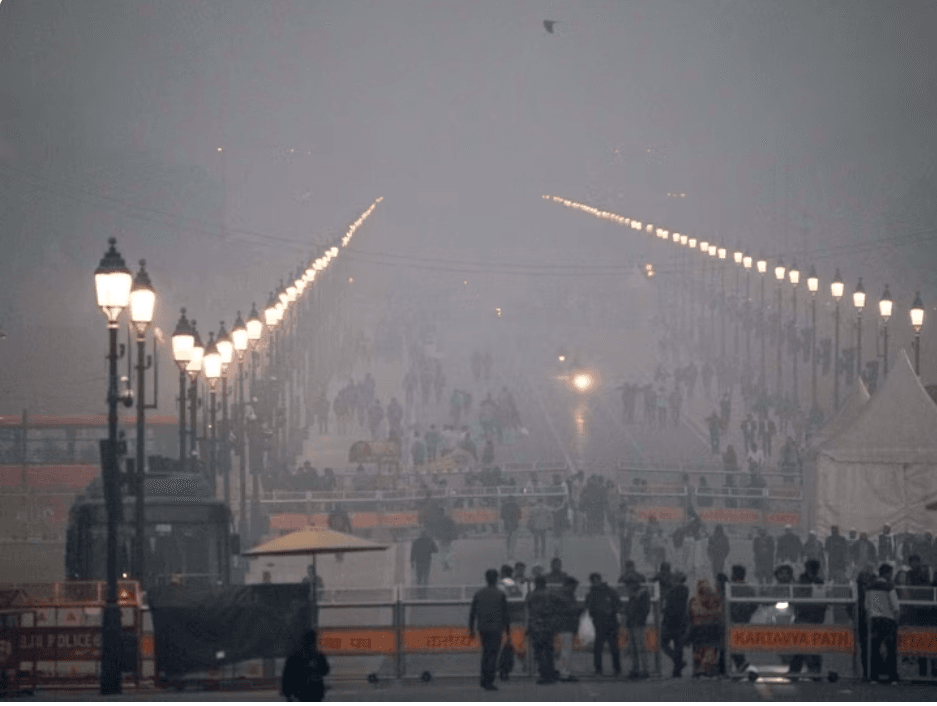An intense and blinding fog enveloped Delhi and other parts of North India on Saturday morning, disrupting air and rail services and leaving passengers stranded.

Around 80 flights were delayed at Delhi Airport as visibility dropped significantly amid the dense winter fog. Several trains running across northern states were also running behind schedule much to the inconvenience of travellers.
Passengers were seen anxiously waiting at the New Delhi Railway Station for delayed trains headed to various destinations. Some rued their flights or trains were delayed by 2-3 hours from original departure timings.
A Sikh family travelling to Gangtok to ring in the New Year complained of their flight being delayed by almost 2 hours. Pilgrims on their way to Mata Vaishno Devi temple also lamented trains not arriving on time.
Officials said over 50 flights had to be diverted from Delhi Airport over the past few days while many were cancelled as pilots aren’t trained to navigate in ‘zero visibility’ conditions. IndiGo, Air India and SpiceJet reported maximum flight delays and diversions.
The dip in temperatures coupled with high air pollution has trapped pollutants close to the ground, reducing visibility at many places to less than 50 meters – not enough for safe navigation.
#WATCH | Delhi: "I am going to Mata Vaishno Devi and our train is late by more than two hours. Our train was supposed to arrive at 5.30 but it hasn't arrived yet…," says a passenger pic.twitter.com/9wGqHCC0zU
— ANI (@ANI) December 30, 2023
Weather officials have forecast dense to extremely dense fog in North India including Delhi for the next 2-3 days. Relief from fog can be expected only after New Year’s Eve.
#WATCH | Odisha: A layer of fog covers Sambalpur as temperature dips further; visuals shot at 6:40 am pic.twitter.com/CNFDqEUFBq
— ANI (@ANI) December 30, 2023
Authorities have advised travellers to check flight and train status in advance to avoid getting stranded midway. Night shelters have also been spruced up for the homeless to protect them from extreme cold.
The fog disruptions serve as a reminder to improve transportation infrastructure and technologies to deal with such weather vagaries whose intensity could increase due to climate change in future.
